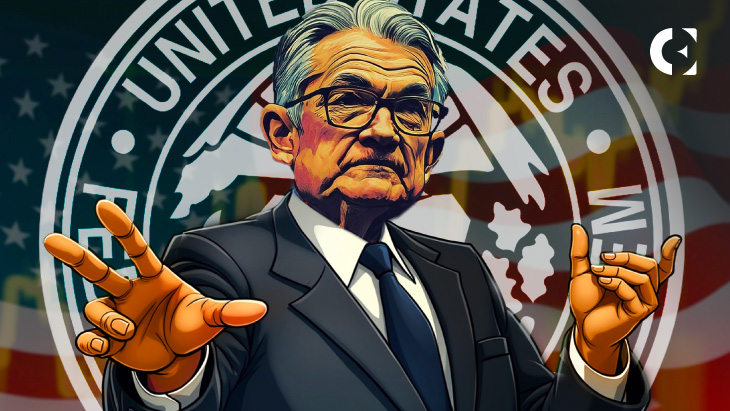Key Insights:
- The Solana price traded near a $145 to $150 support band after a 5.98% daily drop.
- Analysts ShangoTrades, Crypto Tony, and Howard highlighted broken trend support and resistance near $170 to $177.
- ETF products BSOL and GSOL still saw net inflows even as SOL structure weakened.
Solana price traded near a support band around $144 at the time of writing after falling 5.98% in 24 hours, 6.97% on the week, and 28.84% over the past month. Analysts assessed whether buyers could keep the SOL chart above deeper demand zones.
Solana Price Tests Key Support
The SOL price moved back toward the $145 to $150 demand area. Earlier visits to this zone sparked quick bounces, but recent reactions looked weaker.
Traders saw smaller candles and fading volume as Solana price slipped into the range. Those signs suggested that short-term buyers no longer pressed as aggressively.
An analyst described this band as the first important support for the current structure. Below it, the chart opened space toward the $118 to $125 region.
That lower pocket had fueled a strong upside rotation in previous months. The wider gap between the two support layers raised the stakes for trading.
If bulls failed to defend the upper band, SOL price could travel quickly toward the deeper zone. Market participants treated this area as a decision point for trend health.
A controlled pullback here could still fit a normal retracement inside a larger uptrend. A sharp breakdown, by contrast, could push structure into a broader corrective phase.
SOL Price Faces Pattern Risk and Resistance
Higher timeframe charts for Solana price also showed a possible head and shoulders formation. This pattern often signaled exhaustion after a strong advance, with a central high and two lower highs.
Traders viewed it as a classic warning that momentum might fade after an extended rally. The neckline for this setup sat around the $120 to $125 support band.
The volume on the right shoulder looked thinner than on the left shoulder. That difference suggested that buyers committed less capital as the pattern matured.
The Solana price, therefore, carried additional risk if SOL closed below that neckline. Such a move could confirm a shift from consolidation into a deeper corrective phase.
Even before any neckline break, resistance overhead restricted upside attempts. Crypto Tony highlighted the $170 to $177 region as the main recovery barrier.
Rallies from support often stalled before reaching that cluster or were rejected there. Each bounce created another lower high, and sellers used those levels to reenter positions.
Wave counts that used Elliott Wave logic also suggested a corrective environment. Overlapping swings argued against a clean impulse higher and hinted at unfinished downside.
Traders who studied these structures watched the $170 to $177 band as a trigger. Only a decisive break above that area, with stronger volume, would hint at trend repair.
Until then, the Solana (SOL) price stayed inside a heavy short-term structure.
What’s Next for Solana Price?
The market experts focused on a multi-month diagonal trendline on the SOL price chart. That line had connected higher lows and acted as dynamic support for the advance.
Solana Price eventually slipped under the trendline and failed to reclaim it on later rallies. Analyst Howard said that this shift marked a move from accumulation into redistribution.
He then applied Fibonacci projections to outline possible downside milestones. These projections extended the size of earlier swings to estimate where new legs might land.
The first projection sat near $125 and roughly aligned with the neckline zone. A full extension pointed toward an area close to $81 if weakness persisted.
An extreme extension reached into the $40 to $50 band, far below current trading. These levels did not serve as fixed targets for the Solana price.
They instead offered a roadmap for how far SOL might travel if selling pressure expanded. The volume profile under recent ranges also worried some analysts.
Liquidity looked thinner once price dipped below the $145 to $150 block. That structure meant any clean break could move faster than many traders expected.
At the same time, ETF flows told a different story around the token. Products such as BSOL and GSOL continued to record net inflows over recent weeks.
Those flows suggested that institutional investors still accumulated SOL despite the weaker chart. That interest created a supportive backdrop for the Solana price on a longer horizon.
In the short term, however, price action still responded mainly to technical levels. Analysts therefore watched how support around $145 to $150 behaved on each retest.
They also tracked the neckline near $120 to $125 and resistance at $170 to $177. If buyers eventually forced a break above that resistance cluster and held it, sentiment could shift quickly.
Until that happened, traders viewed the Solana price as locked inside a corrective phase.
Source: https://www.thecoinrepublic.com/2025/11/14/can-the-solana-price-find-support-after-its-recent-market-slide/


